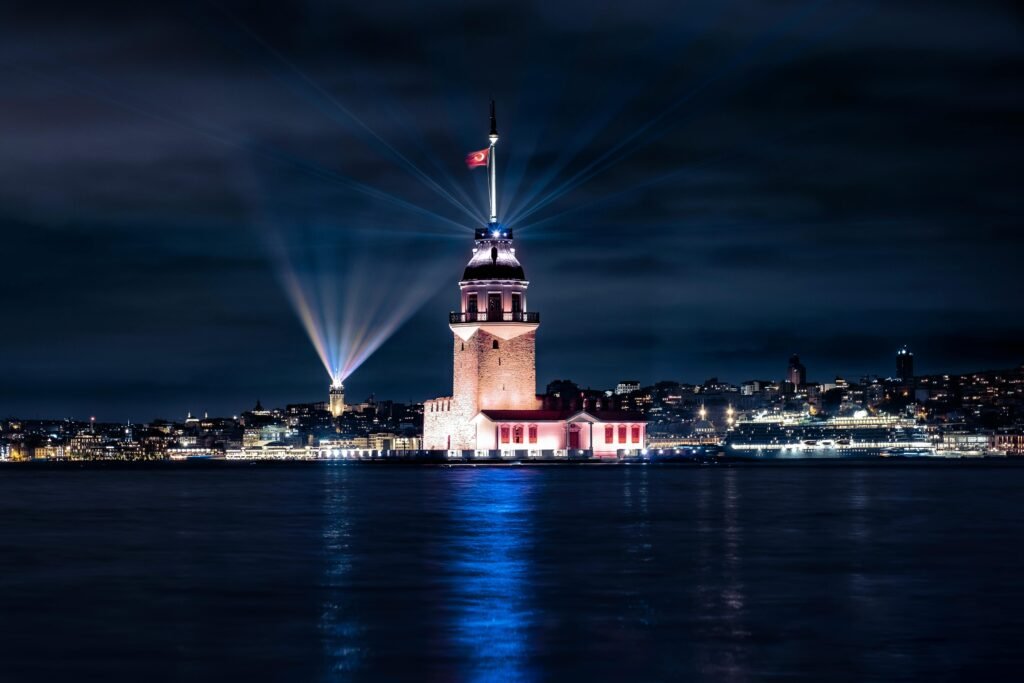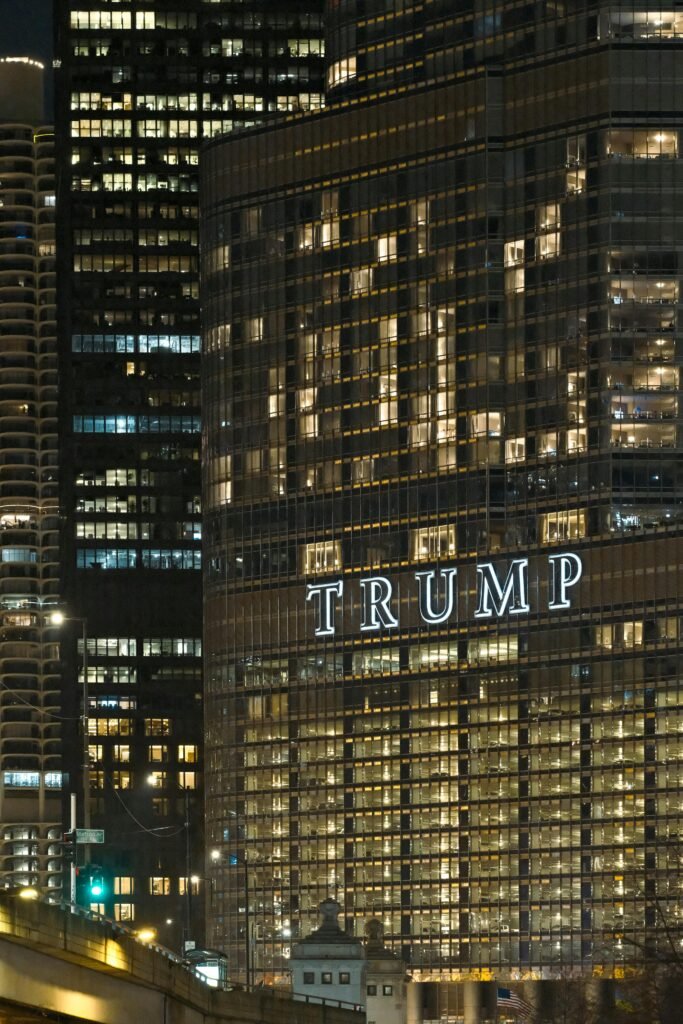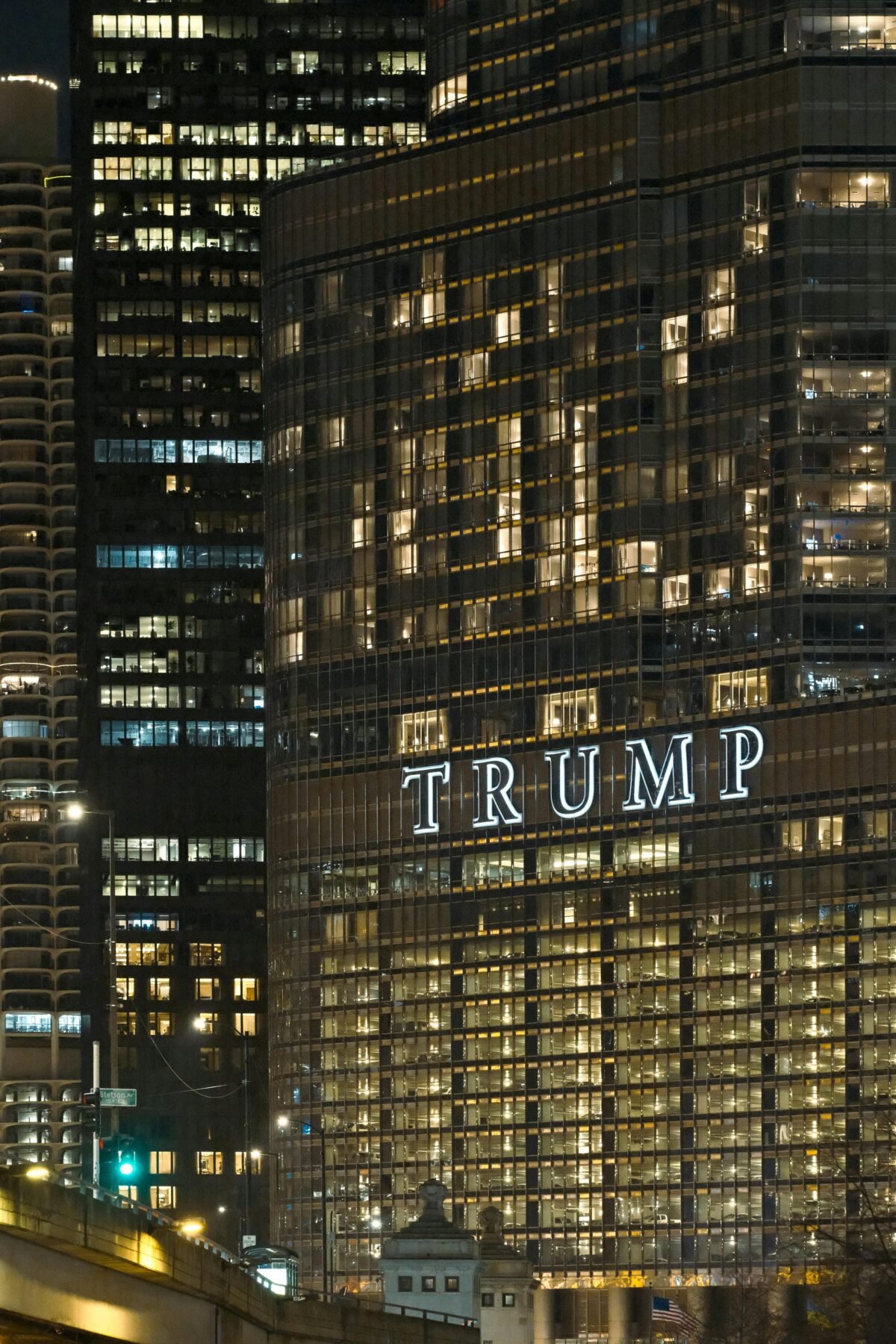Did you know that making a small change in the lighting fixtures in your home can have a significant impact on your energy consumption and save you money on your electricity bills? Energy Star certified light fixtures are the answer! These specially-designed fixtures not only provide bright and efficient lighting for your home, but they also use up to 90% less energy than traditional fixtures. By making the switch to Energy Star certified light fixtures, you can contribute to a greener planet and enjoy the benefits of lower electricity costs. So why wait? Let’s explore how these incredible fixtures can transform your home and your savings.

This image is property of images.unsplash.com.
check out our product reviews
Benefits of Energy Star Certified Light Fixtures
Lower Energy Consumption
One of the primary benefits of choosing Energy Star certified light fixtures is the lower energy consumption they offer. Energy Star certified light fixtures are designed to use significantly less energy compared to traditional fixtures. This means that by using these certified fixtures, you can reduce your overall energy consumption, leading to lower electricity bills and a smaller carbon footprint.
Cost Savings
By opting for Energy Star certified light fixtures, you can enjoy significant cost savings in the long run. Although these fixtures may have a slightly higher upfront cost compared to regular fixtures, their energy-efficient design allows them to consume less electricity over time. This translates into lower energy bills and substantial savings on your monthly utility expenses. Additionally, Energy Star certified fixtures often have a longer lifespan, reducing the need for frequent replacements and further saving you money.
Environmental Impact
Choosing Energy Star certified light fixtures can have a positive impact on the environment. These fixtures are specifically designed to reduce greenhouse gas emissions and decrease the demand for electricity. By using less energy, Energy Star certified fixtures contribute to a reduction in carbon dioxide emissions, helping to combat climate change. Additionally, these fixtures often contain components that are more easily recyclable, reducing waste sent to landfills and promoting sustainable practices.
Understanding Energy Star Certification
What is Energy Star Certification?
Energy Star certification is a voluntary program developed by the U.S. Environmental Protection Agency (EPA) to identify and promote energy-efficient products, including light fixtures. This certification serves as a reliable marker to help consumers confidently choose energy-efficient products that have been proven to meet strict energy efficiency and performance standards.
Criteria for Energy Star Certification
To be Energy Star certified, a light fixture must meet specific criteria set by the EPA. These criteria vary depending on the type of light fixture but typically include factors such as energy efficiency, light output, color quality, and compatibility with existing infrastructure. Only light fixtures that meet these stringent requirements are granted the Energy Star certification.
Benefits of Choosing Energy Star Certified Light Fixtures
Opting for Energy Star certified light fixtures offers several benefits. Firstly, these fixtures are guaranteed to provide energy savings, leading to reduced electricity bills. Additionally, they are backed by reputable testing and verification processes, ensuring their high performance and efficiency. Finally, by choosing Energy Star certified fixtures, you can contribute to a cleaner environment by reducing energy consumption and greenhouse gas emissions.

This image is property of images.unsplash.com.
check out our product reviews
Different Types of Energy Star Certified Light Fixtures
LED Light Fixtures
LED (Light Emitting Diode) light fixtures have gained popularity in recent years due to their exceptional energy efficiency and long lifespan. Energy Star certified LED fixtures use up to 90% less energy compared to traditional incandescent bulbs, while still producing the same level of brightness. They also have a significantly longer lifespan, reducing the need for frequent bulb replacements. LED fixtures are available in a wide range of styles, making them suitable for various applications, from residential to commercial settings.
CFL Light Fixtures
CFL (Compact Fluorescent Light) fixtures have been a popular choice for energy-efficient lighting for many years. Energy Star certified CFL fixtures use about 75% less energy than traditional incandescent bulbs and can last up to ten times longer. They are a cost-effective option for those looking to reduce energy consumption without compromising on light quality. CFL fixtures are available in various shapes and sizes, making them suitable for different room sizes and lighting needs.
Incandescent Light Fixtures
While traditional incandescent bulbs are not known for their energy efficiency, Energy Star certified incandescent light fixtures incorporate advanced technology to improve their efficiency. These fixtures use up to 75% less energy than standard incandescent bulbs and have a longer lifespan. Incandescent fixtures offer a warm and familiar light that is preferred by some individuals and can be a suitable choice for specific lighting applications.
Factors to Consider When Choosing Energy Star Certified Light Fixtures
Brightness and Light Output
When selecting an Energy Star certified light fixture, it is essential to consider the brightness and light output required for your intended space. Different fixtures offer varying levels of brightness, typically measured in lumens. Consider the size of the room and the desired illumination level to choose a fixture that provides adequate light output without consuming excess energy.
Color Temperature
Color temperature refers to the perceived color of light emitted by the fixture and is measured in Kelvin (K). Energy Star certified light fixtures offer a range of color temperatures, including warm white, cool white, and daylight. Consider the desired ambiance and functionality of the space to select a color temperature that complements the environment and meets your needs.
Dimming Capability
Dimmable light fixtures provide the flexibility to adjust the light output according to your preference and specific lighting requirements. When choosing an Energy Star certified light fixture, check if it is compatible with dimmer switches if dimming capability is desired. Not all fixtures are dimmable, so ensure the fixture you select meets your particular dimming needs.
Longevity and Warranty
Energy Star certified light fixtures often come with a longer lifespan compared to traditional fixtures. Consider the estimated lifespan of the fixture and check if it aligns with your expectations. Additionally, look for fixtures that offer a warranty, as this provides peace of mind in case of any defects or performance issues.
Compatibility with Existing Fixtures
If you are replacing existing light fixtures, consider the compatibility of the Energy Star certified fixture with your current infrastructure. Check if the fixture size, socket type, and electrical requirements match those of the existing fixtures to ensure a seamless installation process.

This image is property of images.unsplash.com.
Installation and Maintenance Tips for Energy Star Certified Light Fixtures
Proper Installation for Maximum Efficiency
To maximize the energy-saving potential of your Energy Star certified light fixtures, it is crucial to ensure proper installation. Follow the manufacturer’s instructions carefully and consult a professional electrician if needed. Incorrect installation can lead to reduced energy efficiency and performance, as well as safety hazards.
Regular Cleaning and Maintenance
Periodically cleaning your Energy Star certified light fixtures is essential to maintain their efficiency and light output. Dust and dirt accumulation can hinder the performance of the fixture and reduce the quality of light emitted. Use a soft cloth or a mild cleaning solution to gently clean the fixture’s surface and remove any debris.
Replacing Bulbs and Components
Over time, bulbs may need replacement due to natural wear and tear or reduced performance. When replacing bulbs in your Energy Star certified light fixtures, ensure to use compatible bulbs that meet the energy efficiency standards. Additionally, if any components or parts of the fixture become damaged or worn out, consult with the manufacturer or a professional to replace these components to maintain optimal performance.
Energy Saving Tips for Using Energy Star Certified Light Fixtures
Using Natural Light Whenever Possible
One of the simplest ways to save energy with your Energy Star certified light fixtures is to utilize natural light whenever feasible. Open curtains or blinds during the day to allow natural sunlight to illuminate your space. By relying on natural light, you can minimize the need for artificial lighting, reducing energy consumption and lowering your electricity bills.
Adjusting Light Levels According to Needs
Another energy-saving tip is to adjust the light levels according to your specific needs. Dimmable Energy Star certified fixtures allow you to decrease the light output when full brightness is not required. By reducing the intensity of the light, you can conserve energy while still maintaining comfortable and functional lighting levels.
Using Timers and Motion Sensors
Incorporating timers and motion sensors with your Energy Star certified light fixtures can help automate lighting control and save energy. Timers can be programmed to turn the lights on and off at specific times, ensuring that they are only used when needed. Motion sensors can detect movement in a room and automatically switch on the lights, eliminating the chance of lights being left on when the room is unoccupied.
Minimizing Energy Loss through Proper Insulation
To optimize the performance of your Energy Star certified light fixtures, it is essential to minimize energy loss through proper insulation. Ensure that insulation around the fixtures is intact and adequately seals any gaps or cracks that may allow air leakage. This will help prevent energy wastage and maintain a more efficient and comfortable environment.
Common Myths and Misconceptions about Energy Star Certified Light Fixtures
Energy Star Certified Light Fixtures are Expensive
Contrary to popular belief, Energy Star certified light fixtures are not necessarily more expensive than their non-certified counterparts. While some certified fixtures may have a higher upfront cost, the long-term energy savings and potential rebates or incentives can offset the initial investment. Additionally, the increased efficiency and extended lifespan of Energy Star certified fixtures can result in overall cost savings over time.
Energy Star Certified Light Fixtures Produce Poor Quality Light
Another myth about Energy Star certified light fixtures is that they produce poor quality light. In reality, Energy Star certified fixtures undergo rigorous testing to ensure they meet specific standards for light quality, color accuracy, and color consistency. These fixtures can provide excellent light output, offering the same level of brightness and color quality as traditional fixtures, if not better.
Energy Star Certification is Not Reliable
Some individuals may question the reliability of the Energy Star certification program itself. However, the Energy Star program is backed by the U.S. Environmental Protection Agency, which rigorously tests and verifies the performance and energy efficiency of the certified products. The program has gained credibility and trust over the years, making Energy Star certification a reliable indicator of energy efficiency and performance.
Success Stories: How Energy Star Certified Light Fixtures Have Made a Difference
Energy Savings for Residential Buildings
In residential buildings, the implementation of Energy Star certified light fixtures has resulted in significant energy savings. Homeowners and renters alike have reported lower electricity bills after switching to these energy-efficient fixtures. The reduced energy consumption has made a noticeable difference in the overall energy costs of households, allowing individuals to allocate their funds to other essential expenses.
Cost Reductions for Commercial Spaces
For commercial spaces, the use of Energy Star certified light fixtures has proven to be a wise investment. Businesses and organizations have witnessed substantial cost reductions on their electricity bills by switching to these energy-efficient fixtures. Whether it is an office building, retail store, or hospitality venue, the lower energy consumption translates into more manageable operating costs, making a positive impact on the bottom line.
Positive Environmental Impact
The use of Energy Star certified light fixtures has also had a positive environmental impact on a larger scale. The reduced energy consumption and lower greenhouse gas emissions contribute to a cleaner and healthier environment. By choosing these energy-efficient options, individuals and businesses alike are actively participating in sustainable practices and playing their part in addressing climate change.
Support and Incentives for Energy Star Certified Light Fixtures
Federal and State Programs
Various federal and state programs offer support and incentives for the use of Energy Star certified light fixtures. These programs aim to encourage energy-efficient practices and provide financial assistance to individuals and businesses seeking to make energy-saving upgrades. Research the available programs in your area to determine if you are eligible for grants, loans, or other incentives that can help offset the cost of installing Energy Star certified fixtures.
Rebates and Discounts
Manufacturers, utility companies, and local municipalities often offer rebates and discounts for purchasing and installing Energy Star certified light fixtures. These incentives can significantly reduce the upfront cost and make the transition to energy-efficient lighting more affordable. Check with the fixture manufacturer or your local utility company to explore rebate options and take advantage of any current promotions.
Tax Credits and Deductions
In addition to rebates and discounts, there may also be tax credits and deductions available for using Energy Star certified light fixtures. Consult with a tax professional or refer to relevant government websites to understand the specific tax incentives offered in your jurisdiction. Taking advantage of these tax benefits can further reduce the overall cost of installing energy-efficient fixtures and increase your potential savings.
Conclusion
Energy Star certified light fixtures offer numerous benefits, including lower energy consumption, cost savings, and positive environmental impact. Understanding the certification process and the different types of certified fixtures available can help you make an informed decision when selecting lighting options for your space. Factors such as brightness, color temperature, dimming capability, longevity, and compatibility with existing fixtures should also be considered. Proper installation, regular maintenance, and energy-saving practices further enhance the efficiency and lifespan of Energy Star certified fixtures. Despite some common myths, these fixtures are neither excessively expensive nor produce poor quality light. The success stories from residential and commercial spaces demonstrate the tangible benefits of incorporating energy-efficient lighting solutions. Support and incentives from federal and state programs, rebates, discounts, and tax credits make the transition to Energy Star certified light fixtures even more accessible. By choosing Energy Star certified light fixtures, you not only save on energy costs but also contribute to building a sustainable future for generations to come.
check out our product reviews















